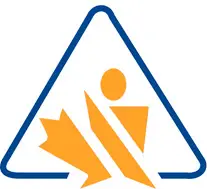
Every good health and safety program begins with a proper employee orientation.
Section 3.23 (1) of the OHS regulations states that “An employer must ensure that before a young or new worker begins work in a workplace, the young or new worker is given health and safety orientation and training specific to that young or new worker’s workplace.”
Orientations are often overlooked by many employers who are anxious to get their new hires doing the job they are paid to do. Far too often, it is assumed that if a new employee already has experience in their industry, they must have received the necessary training to perform their jobs safely. However, you should never assume anything when it comes to safety. For this reason, it is important to conduct a proper orientation with a new worker in order to ensure basic safety practices are understood and followed.
It can be difficult for an employer to know what sorts of things employees need to be aware of before they commence work; employees, in turn, often feel overwhelmed with the amount of information they receive the first day or two on the job.
For this reason, the ARA has created this website and a wealth of information specifically tailored for the automotive industry, including a new Safety Awareness Handbook for Automotive Service Employees.
OHS Requirements
What are the requirements for having an informal or formal health and safety plan?
Requirements for workplace health and safety programs can be found in section 3 of the OHS regulations.
An occupational health and safety program, as outlined in section 3.3 of the OHS regulations, must be initiated and maintained by any employer that has:
- A workforce of 20 or more workers, and
- At least one workplace that is determined under section 3.16 (2) (b) to create a moderate or high risk of injury, or
- By each employer that has a workforce of 50 or more workers

Despite subsection (1), an occupational health and safety program may be required in any workplace when, in the opinion of an officer, such a program is necessary.
For companies less than 20 employees a less formal program must be maintained and include the following:
- Regular monthly meetings with workers for discussion of health and safety matters
- Ensure that meetings are directed to matters concerning the correction of unsafe conditions and practices and the maintenance of cooperative interest in the health and safety of the workforce, and
- Maintain a record of the meetings and the matters discussed.
Orientation Guide
Read Online Booklet
Click to open a copy you can flip through like a book on your screen
The ARA Safety Awareness Handbook was designed as a tool for employers to help guide their new employees through the orientation process. The handbook includes relevant information concerning the work they will be performing as an automotive service employee.
Whether they are beginning work for a tow company, recycling yard, or a mechanical, collision, or glass repair shop, the handbook will be a useful tool for your new employees to get on the track.
The handbook includes pictures, samples, and references, so your new hire can know where to find health and safety information relevant to the types of work they will be performing. After the orientation session is complete, the employee signs a copy and keeps it for future reference.
You can download a FREE PDF copy here:
Or contact the ARA to purchase printed copies (while supplies last)
Joint H&S Committee
What is a Joint Health and Safety Committee (JHSC)?
A JHSC is a requirement for and workplace that regularly employs 20 or more workers (full and part-time). The Joint Occupational Health and Safety Committee Foundation Workbook examines the role of the joint Health and Safety committee, the selection of committee members, activities, meetings, and other important information employers need to achieving committee objectives.
Download your free copy of the workbook:

WHMIS
WHMIS stands for Workplace Hazardous Materials Information System.
Workers exposed to hazardous materials may be at risk for many serious health problems. Some hazardous materials can also cause fires or explosions. The Workplace Hazardous Materials Information System (WHMIS) provides specific health and safety information about workplace hazardous materials called controlled products.
Employers must use this information as well as information specific to their workplace to educate and train workers to work safely with and near materials.
The WHMIS 2015 legislation is currently in force. “In force” means that suppliers may begin to use and follow the new requirements for labels and safety data sheets (SDSs) for hazardous products sold, distributed, or imported into Canada.
Going Beyond: The COR Program
The Certificate of Recognition (COR) program provides financial incentives to employers who go beyond the legal requirements of the Workers Compensation Act and Occupational Health and Safety Regulation by taking the “best practice” approach to implementing health and safety programs. The goal of the COR program is to improve workplace safety.
COR is a voluntary program. Participation in the COR program enhances your company’s health and safety program with the goal of reducing injuries and claims costs. Your company will also be eligible for certain rebates or financial incentives. Successful completion of the OHS COR qualifies employers for a 10% rebate on their WorkSafeBC premiums.
For more information about becoming COR certified, visit SafetyDriven.ca.





